|
The
Onward Buildings
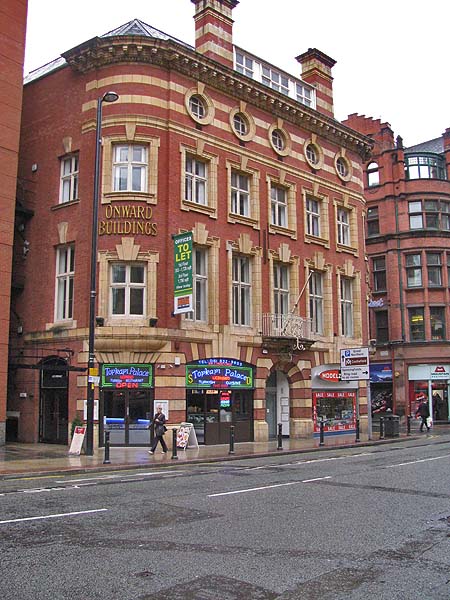 The "Onward
Buildings" can be found on the east side of
Deansgate at the corner of Bootle Street.
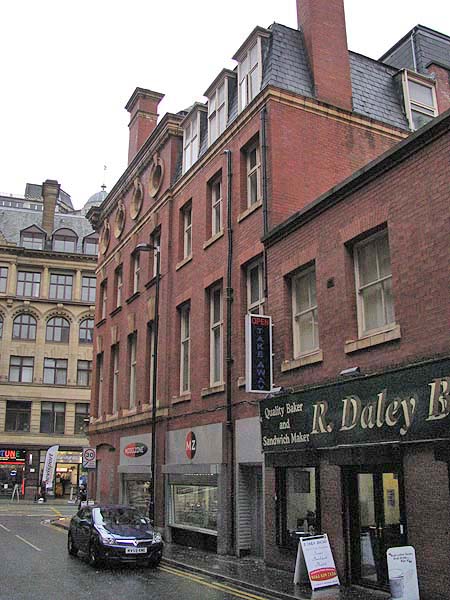 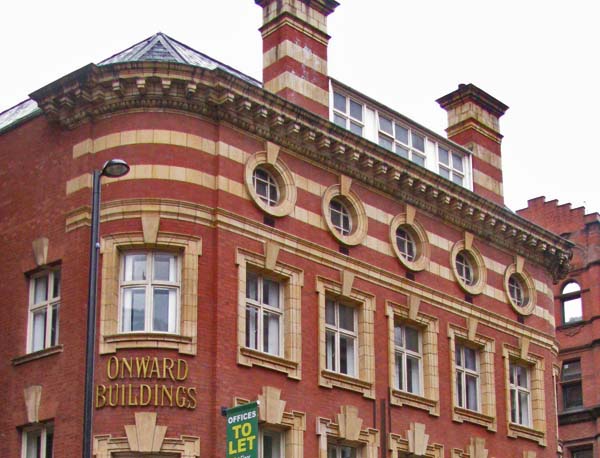 In October of 2010
the Onward Buildings are home to a Turkish
Restaurant and a model shop at street level and
office space above.
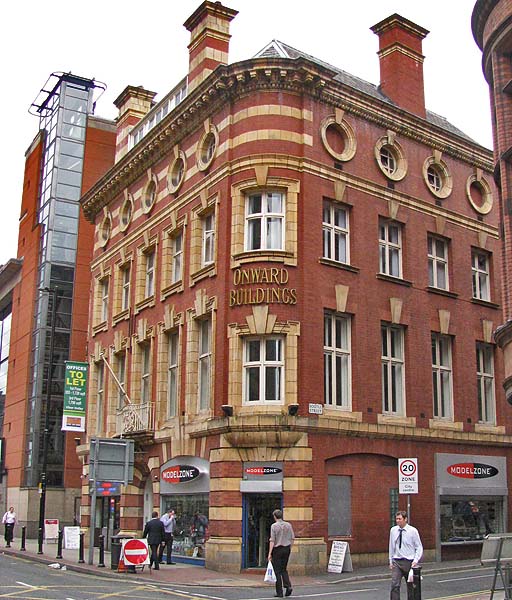 A small wrought iron balcony sits above the entrance. 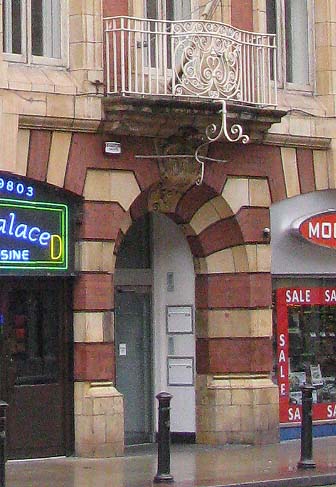 The elaborate keystone
above the entrance reveals the building's original
purpose because it says "Band of Hope" with a cherubic
angel's face below.
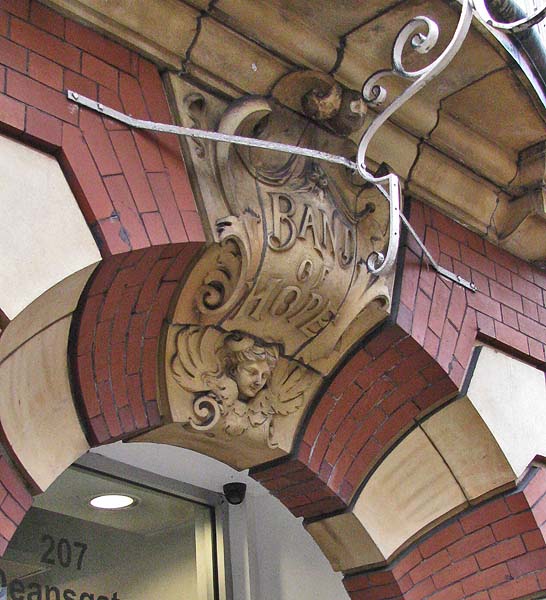 Heathcote was
commissioned to design the building for the Band of
Hope. The name itself gives it away since
"Onward" was the title of the first of the Band of
Hope newspapers intended for children, which began
publication in 1865. The paper included a
variety of material aimed at reinforcing the
temperance way of life including music, moral tales,
stories, and poetry. The overall message was the
need to be on guard against temptations and keep on
the straight and narrow.
The building's construction was financed by a federation of local temperance societies. Further evidence of this is to be found on the third floor where the porthole style windows light a green tiled hall with a stage at one end. 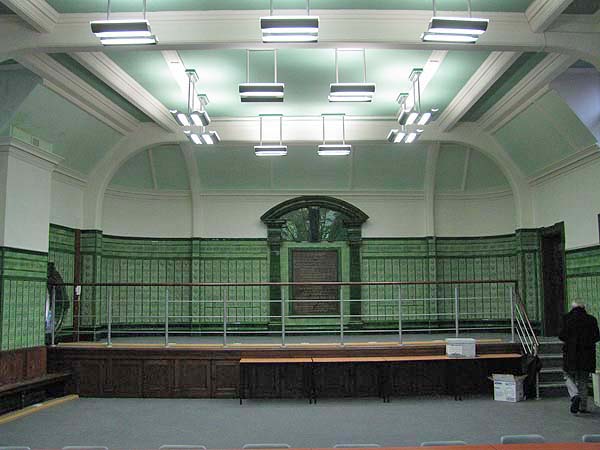 Behind the stage is a large plaque in an elaborate tile frame. 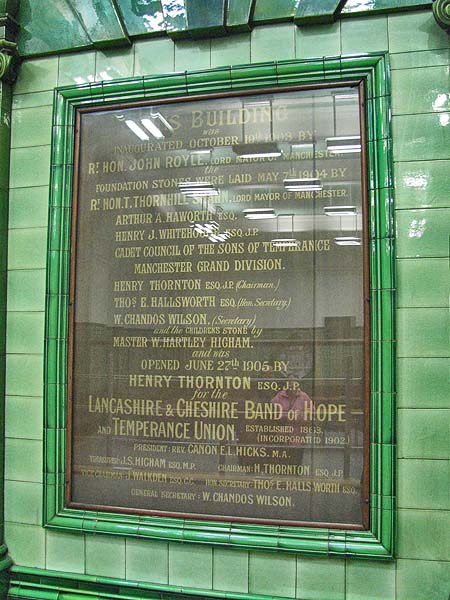 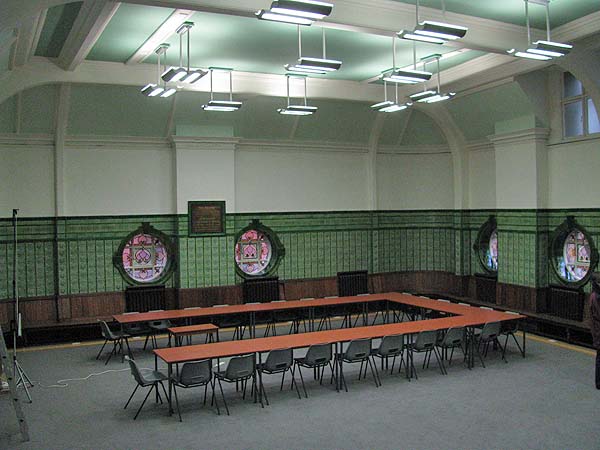 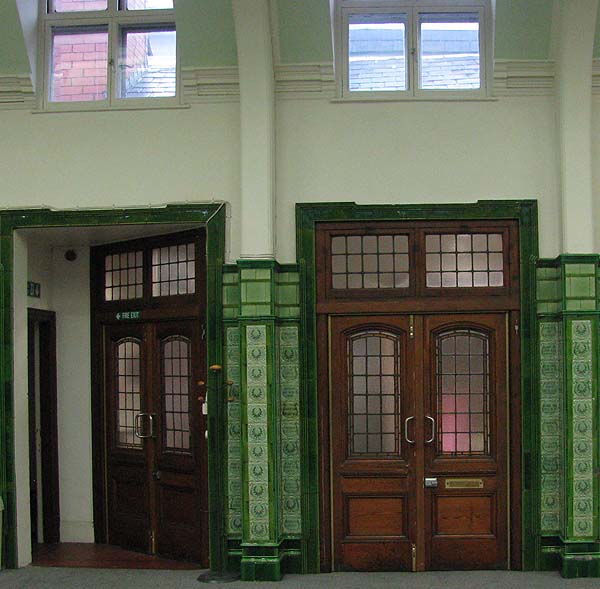  On the wall above one
of the round windows is a ceramic plaque. It
points out that the names of the various temperance
organizations and individuals, who supported the
building's construction, are listed on the tiled wall
below.
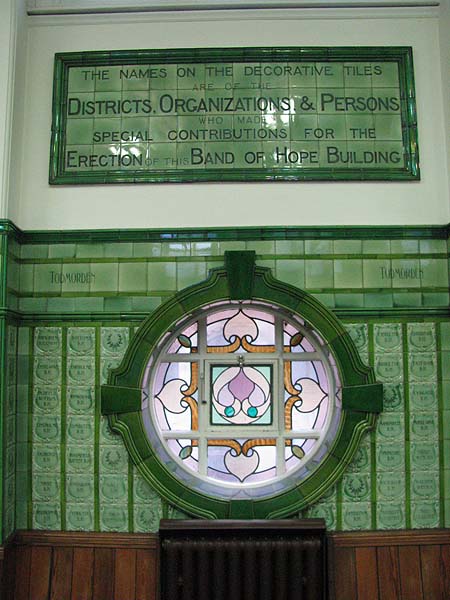 A border of tiles
lists various areas from which the support came and
the tiles below the border are dedicated to groups and
individuals who supported the cause.
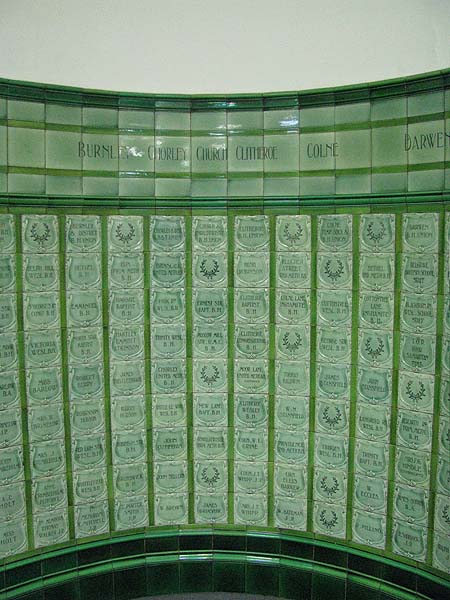 A close look at the tiles reveals many prominent names from Manchester's history. 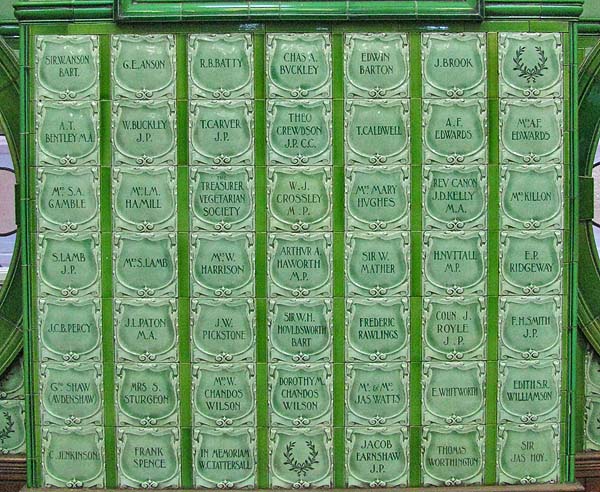 In the section shown above, forinstance, you can see the names of: Thomas Worthington
the architect responsible for the court house on
Minshull Street and Nicholl's Hospital School on Hyde
Road as well as the Albert Memorial in Albert Square.
W. J. Crossley M. P. founder with his brother of the Crossley Brothers Engineering Company. He was the MP for Altrincham and made a baronet in 1909. He was a teetotaler and treasurer of the United Kingdm Alliance, a temperance organization. Sir William Anson who donated land for the creation of Birchfields Park and the Anson Estate. His name is comemmorated in Anson Road. Sir William Mather chairman of Mather & Platt and a liberal politician. Above this section of
the wall there is a large plaque dedicated to John
Harrop
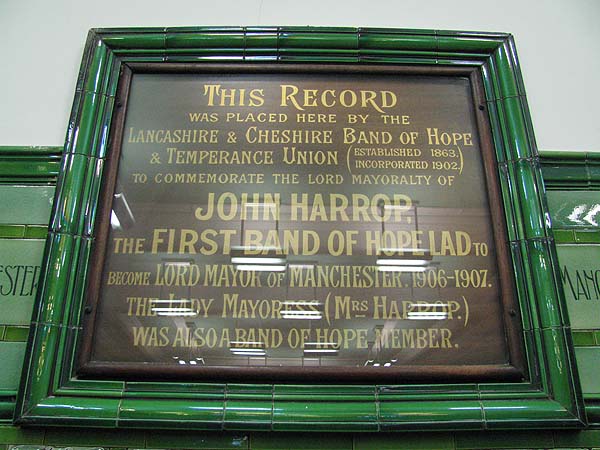 The building has
other interesting features and has been lovingly
restored by its present owner.
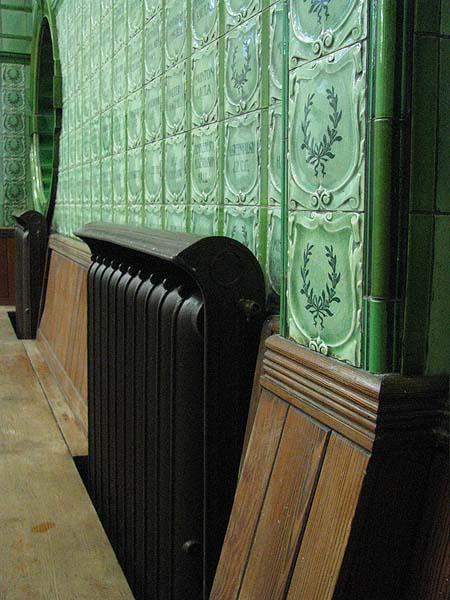 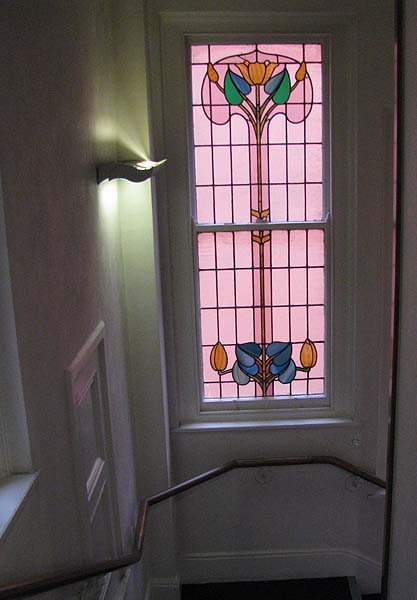 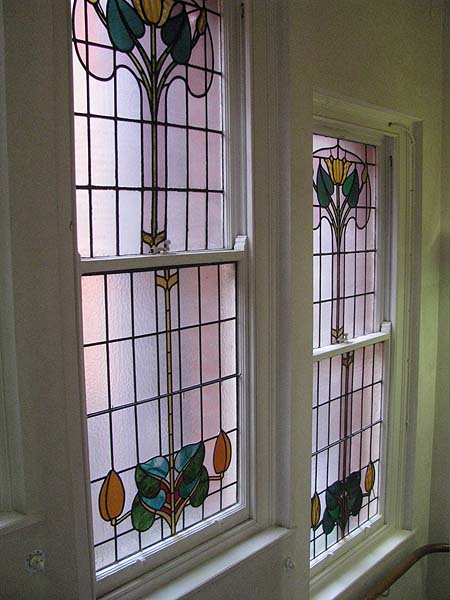 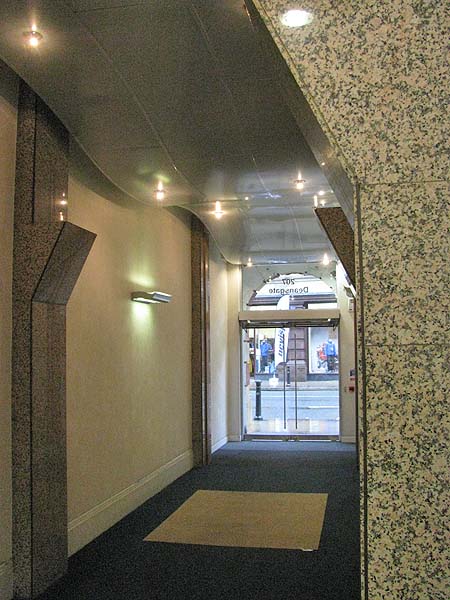  **************************** The Band of Hope For those who believe
that binge drinking in 2010 is a new phenomenon
blighting Britain's streets, the truth is that in the
1800s excessive drinking was a significant feature of
life. Temperance societies, usually sponsored by
Christian groups, sprang up around the country.
Their goal was to encourage people to turn their backs
on the evils of alcohol and take "The Pledge".
Among these groups was
the Band of Hope which was founded in 1845 by the
Reverend Jabez Tunnicliffe in Leeds. The Band of
Hope was particularly distressed about the affects of
alcohol on children and at their first meeting in 1847
some 300 people turned up of which 200 were children
who signed the pledge. The Band of Hope's web
site outlines the conditions that prevaled at this
time, "One of the evils of Victorian society was
cheap and grossly abused child labour – small
children were regarded as ideal for working in coal
mines, in cotton mills and as chimney sweeps - some
children, employed as chimney sweeps, were as young
as 8 years. Life, both for them and their parents
was wretched; physical and emotional pain oppressed
them all the time, prospects of escaping from this
drudgery were nil - and their only solace was in the
alehouse. Beer was cheap, spirits were plentiful and
there were no restrictions on children visiting
alehouses. The Silk-Buckingham Committees of 1834
reported that in 14 public houses in London, 18,391
children entered one of these during one week.
Twenty years later, a select committee reported of
public houses in Manchester “on a single Sunday in
1854 there were 212,243 visits to drink shops and
22,132 of these were made by children, some of whom
went to drink on their own account - some to fetch
drink”. By 1887 the organization
had about 1½ million members out of 8 million young
people in Britain of Band of Hope age. Four
years later that number had risen to 2 million. The YouTube video below shows a Band of Hope procession in Manchester in 1901 some 3 years before Onward House was completed.
*******************************************
Prior to the
Onward Buildings occupying this site, the nature
of the area was quite different. Four
public houses were located in close vicinity and
many of the buildings were residential rather
than commercial. The location of the
Onward Buildings is shown on the 1849 OS map
below as a translucent purple square, revealing
that Number 1 Court preceded it. Adjacent
to the site was a Quaker's Burial Ground,
possibly connected to the congregation of the
Friends Meeting House, that was built on nearby
Mount Street in 1828.
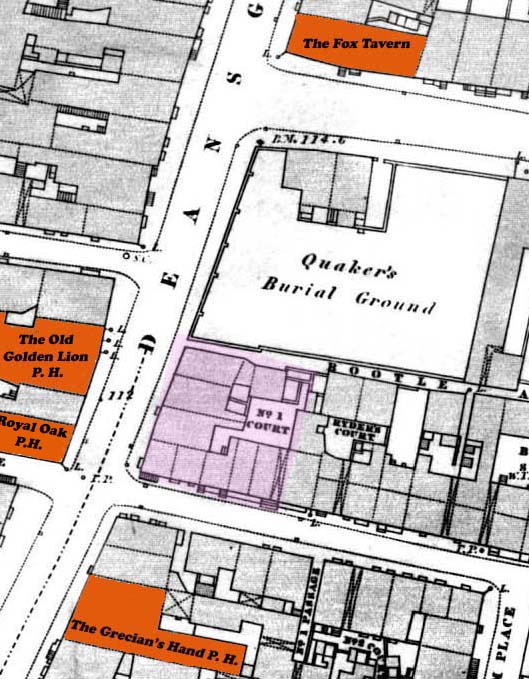 By 1901 much
had changed in the area. Elliot House,
the Manchester School Board Offices, was
under construction on the corner of Jackson
Row and Deansgate. On the former
Quaker's Burial Ground "Century Building"
was also under construction for Leech
Brothers & Co. The site on the
corner of Bootle Street was empty.
Clearly the buildings around Court 1 had
been demolished setting the stage for the
construction of the Onward Buildings.
*********
Moving
forward in time, the aerial image below
dates from the 1940s. The red
arrow points to the Onward
Buildings. Century Building, its
neighbour, has gone possibly a victim of
the Blitz.
 In 2010 the
site of the Century Building is occupied by
the unromantically named "201 Deansgate", a
modern office building designed by Holford
Associates and built in 1995 - 96.
 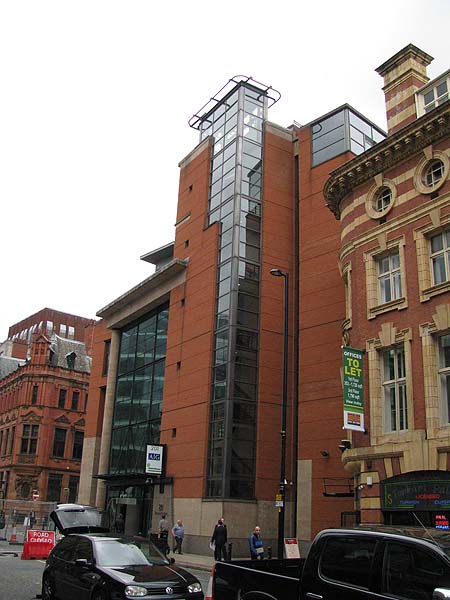 |